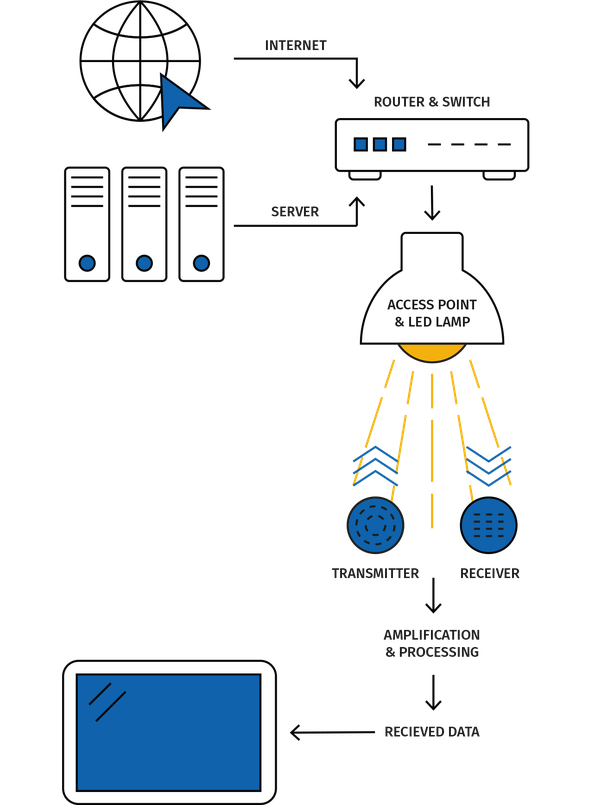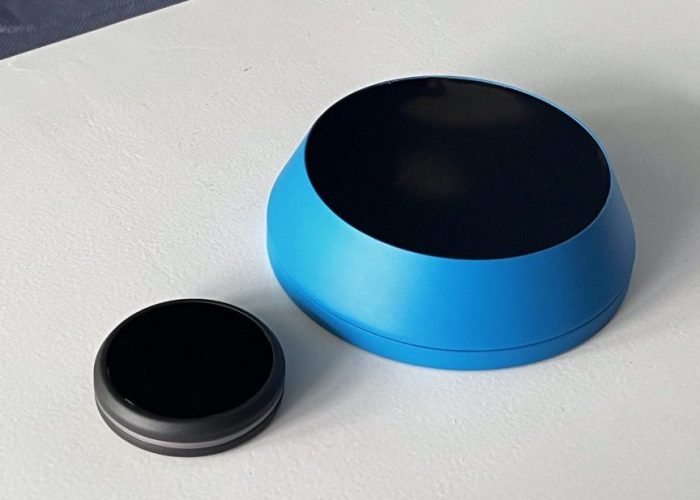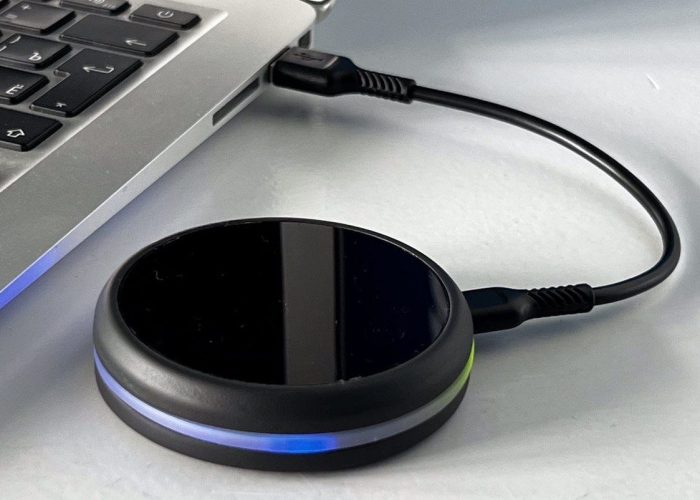LiFi Technology
What Is LiFi?
Other than VLC (visible light communication), which is defined as a point to point connection between two devices, LiFi creates a full scale, light based network similar to radio frequency based communication.
The electromagnetic spectrum suitable for LiFi communication ranges from 200 THz up to 800 THz, so both invisible (infrared) and visible light spectrum can be used for data transmission.

How Does it work?
LiFi access points provide wireless access to the local network and at the same time could also act as general illumination units. The downstream is generated by the LEDs of the light fixture.
The connecting devices contain a sensor to receive the data stream as well as a transmitting unit (IR diode) to provide the upstream to the access point.
Several users can be connected per access point, and seamless handover between access points creates a connectivity experience which is known from conventional WiFi or cellphone networks.
The number of possible users per access point is rising rapidly, with the evolution of the LiFi technology.
No direct line of sight between sensor and access point is required, the data stream is maintained also by reflection from surfaces like walls and other objects.
LiFi Advantages

Security
Unlike radio waves, light waves are blocked by physical barriers like walls or shaded windows. This makes it possible to contain the signal in an enclosed area, minimizing the risk of network penetration and jamming.

Eco Friendly
LiFi could save energy by combining two functionalities: lighting and connectivity. In principle, the infrastructure needed for the LiFi data link is already there – the LED light installations.

Data Density
Greater bandwidth, more speed – LiFi performance highly outranges WiFi in lab environment. We will bring this performance to the market and to your applications.

No Health Concerns
Radiowaves are present all over the world, penetrating and affecting live tissue. Density and coverage area of electromagnetic fields is rising constantly, to keep up with the demand for wireless communication – increasing electrosmog day by day. LiFi drastically reduces electrosmog. Light waves do not penetrate your body.


